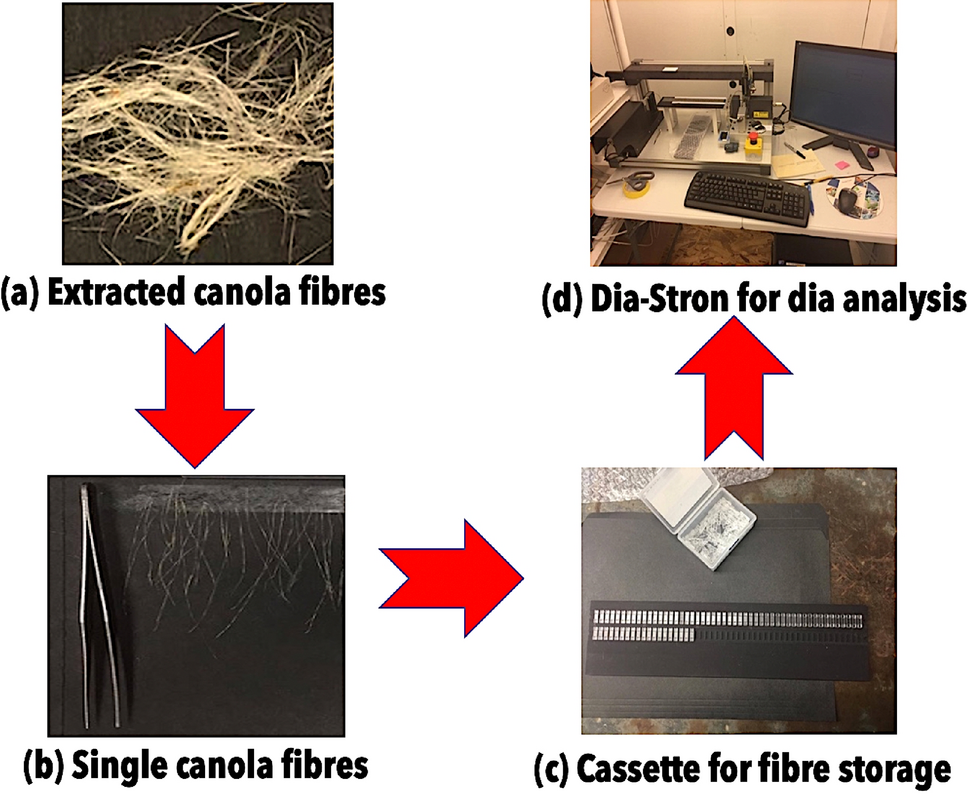Maximize Your Fiber Optic Performance: Comprehending Optical Fibre Size Analyser Innovation
The performance of fiber optic systems is seriously influenced by the precision of their diameter, a variable often ignored in the search of optimum signal integrity. Comprehending the modern technology behind optical fibre diameter analysers discloses the complex balance between measurement precision and production high quality.
Significance of Optical Fiber Size
The size of optical fibre plays a critical role in identifying the performance and performance of interaction systems. It affects numerous vital specifications, including the mode of light breeding, depletion, and data transfer ability. Larger diameters typically enable for multiple light settings, helping with higher information transmission prices. On the other hand, smaller sized sizes tend to support less modes, which can improve signal clarity and minimize crosstalk.

In addition, recognizing the diameter's ramifications can result in set you back financial savings by decreasing the need for signal boosting and repeaters in substantial networks (optical fibre diameter analyser). Finally, the importance of optical fiber size can not be overemphasized, as it straight influences the overall performance and dependability of modern interaction systems

Just How Size Affects Signal Quality
Signal high quality in optical fiber systems hinges significantly on the diameter of the fiber. A smaller sized size can lead to greater attenuation prices, resulting in signal loss as light travels through the fiber.
Alternatively, bigger diameters typically permit enhanced light capture and decreased modal diffusion, enhancing signal clearness. In multimode fibers, a larger core diameter can support several light settings, yet it may likewise present intermodal diffusion, which can weaken signal top quality. Choosing the ideal fiber size is essential for accomplishing the wanted efficiency in specific applications.
In addition, the interaction between the fiber size and the wavelength of the light utilized plays an essential duty in identifying the efficient transmission range and general signal integrity. Therefore, recognizing how fibre size impacts signal high quality is vital for network designers and engineers aiming to maximize optical fibre systems for trusted, high-speed data transmission.
Introduction of Size Analyser Technology
In lots of optical fiber manufacturing procedures, precise measurement of fibre diameter is crucial for guaranteeing constant efficiency and quality (optical fibre diameter analyser). Diameter analysers are advanced instruments developed to analyze the physical measurements of optical fibers with high accuracy. They employ advanced optical and laser modern technologies to determine the size, ovality, and concentricity of the fibre, hence providing vital information for top quality control
These analysers can run in-line throughout the manufacturing process or as part of off-line testing procedures. In-line systems allow real-time surveillance, permitting manufacturers to change criteria immediately, therefore maintaining optimal original site production conditions. Off-line analysers, on the other hand, offer detailed assessments of batches, making sure that any type of inconsistencies from defined resistances are determined and attended to.
Size analysers substantially contribute to the reduction of defects in optical fibers, boosting total product dependability. By regularly measuring key parameters, these technologies promote conformity with market requirements and specifications. As the need for high-performance optical fibres remains to increase, the function of size analysers becomes progressively essential in accomplishing the desired quality and performance standards in fibre optic systems.
Secret Functions of Fiber Size Analysers
Although different versions of fibre diameter analysers exist, they generally share a number of key attributes that improve their functionality and integrity. Among the most considerable functions is high-resolution measurement capacities, which guarantee precise size analyses, vital for maintaining top quality control in fibre manufacturing. Furthermore, several analysers include innovative optical sensing units developed to spot minute variations in fiber diameter, hence providing invaluable information for process optimization.
An additional essential attribute is real-time monitoring, permitting operators to get prompt comments on fiber size throughout the manufacturing procedure (optical fibre diameter analyser). This capability helps with fast changes and lowers the possibility of issues. Many his comment is here analysers likewise come outfitted with straightforward user interfaces, allowing drivers to easily navigate with data and settings outcomes
Moreover, robust data storage and evaluation capabilities are vital for tracking historical performance patterns and making sure conformity with sector standards. Some models even offer connectivity options for assimilation right into existing production control systems, enhancing total operational efficiency. Portable and mobile layouts permit for adaptable release within manufacturing atmospheres, making certain that high quality assurance procedures are smooth and effective. These features jointly contribute to the efficiency of fiber diameter analysers in enhancing fibre optic efficiency.
Finest Practices for Fibre Optimization

First, regular calibration of optical fiber diameter analysers is essential. This makes certain precise measurements and decreases prospective disparities that could impact efficiency. Next off, preserving a clean functioning environment is important; dirt and contaminants can lead to signify deterioration.
In addition, it is very important to select fibres that fulfill particular application needs. This includes evaluating aspects such as attenuation, transmission capacity, and environmental problems. Correct setup strategies ought to likewise be abided by, including staying clear of sharp bends and excessive stress, which can endanger fibre stability.
In addition, employing sophisticated surveillance systems can help with real-time efficiency analyses, enabling timely recognition of issues. Regular screening and upkeep should be conducted to ensure that fibres remain within optimum operational parameters.
Lastly, training employees on the most up to date fiber optimization modern technologies and methods will certainly boost their capability to execute effective techniques. By complying with these finest methods, companies can considerably boost the efficiency and life-span of their optical fiber systems, ensuring efficient communication and data transfer.
Conclusion
Finally, the combination of optical fibre diameter analyser innovation is important for making the most of fibre optic performance. By ensuring precise dimensions of fibre dimensions, these analysers considerably enhance signal quality and lower losses during information transmission. Normal calibration and upkeep of the analysers are imperative to copyright optimum performance and conformity with market requirements. Eventually, the application of this innovation helps with improved information transmission prices and enhances signal integrity, contributing to the total look at this now performance of fibre optic systems.
Signal quality in optical fiber systems hinges dramatically on the diameter of the fiber.In lots of optical fibre production processes, precise measurement of fibre size is necessary for guaranteeing regular performance and top quality. As the need for high-performance optical fibres continues to climb, the role of size analysers becomes significantly vital in attaining the desired high quality and performance criteria in fiber optic systems.
These functions jointly contribute to the effectiveness of fibre size analysers in optimizing fibre optic performance.
In conclusion, the combination of optical fibre size analyser technology is vital for maximizing fibre optic efficiency.